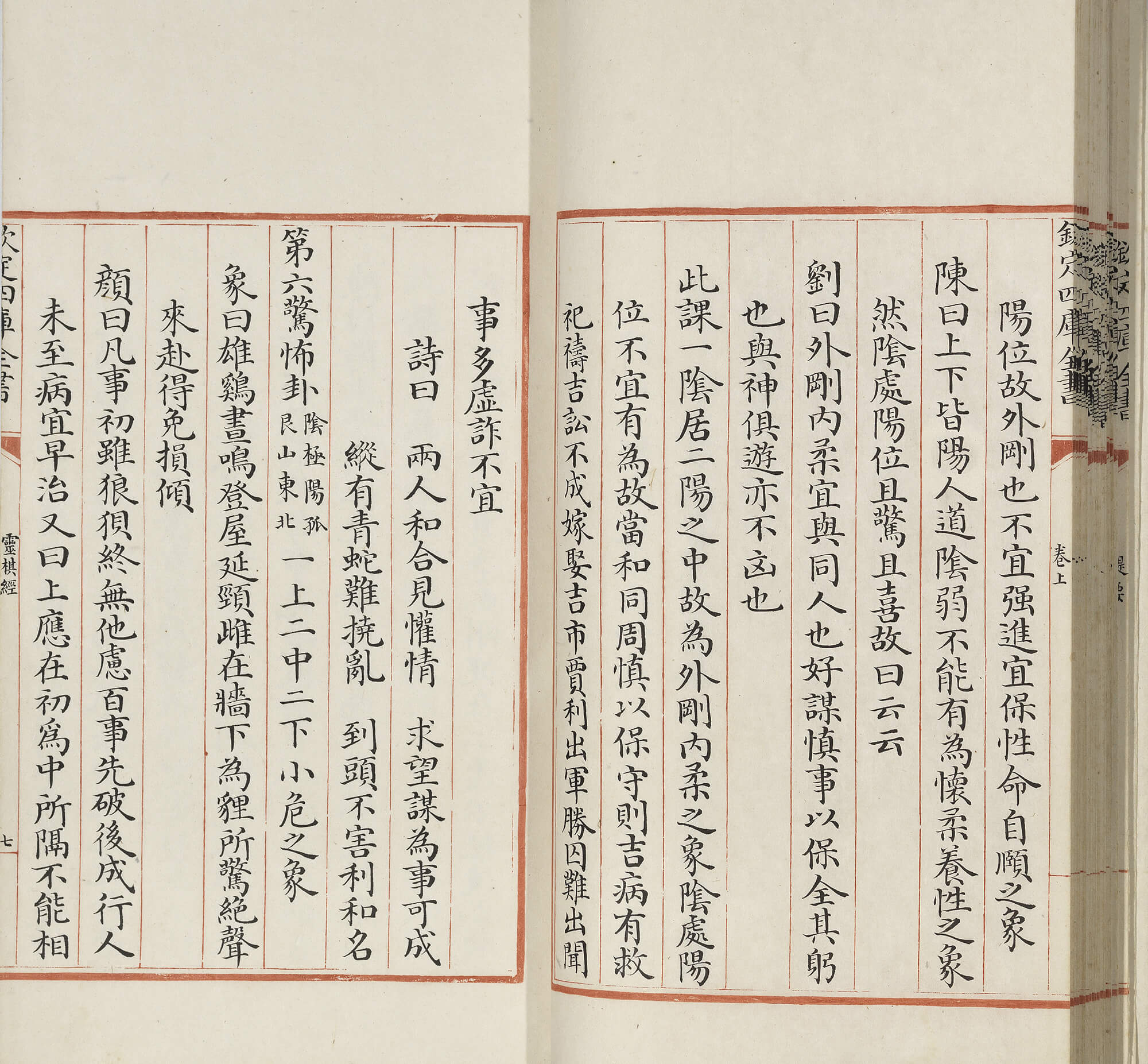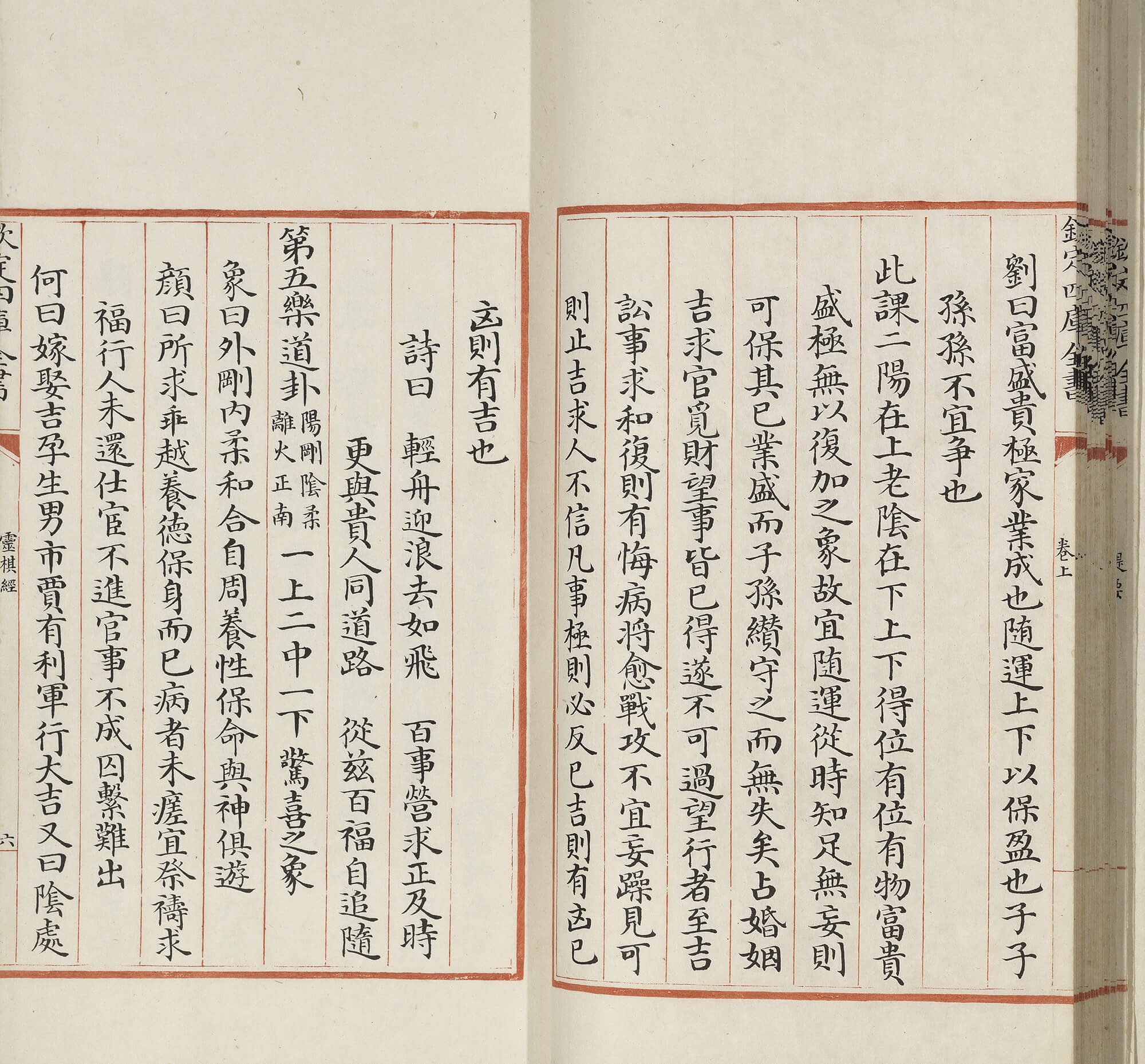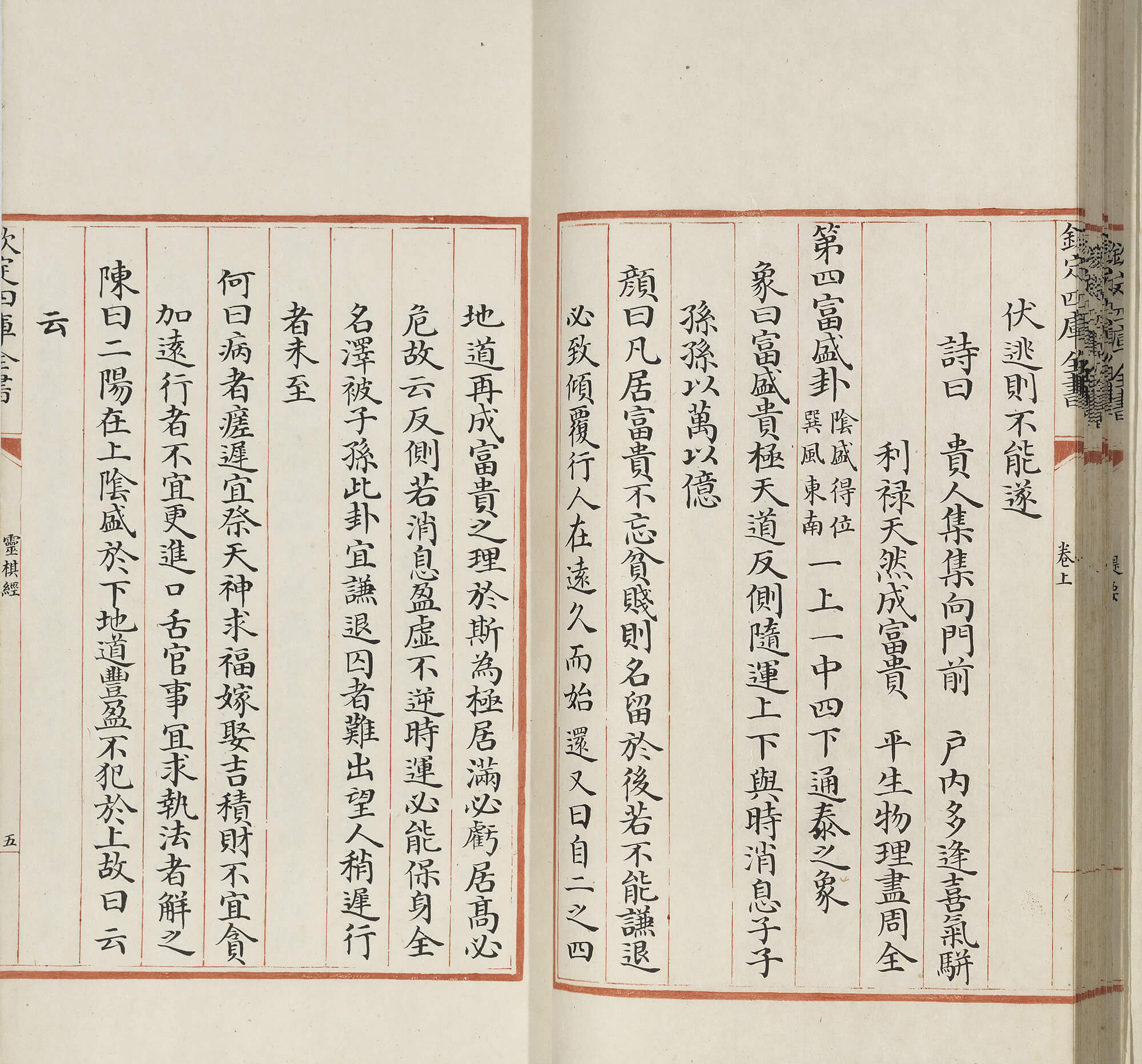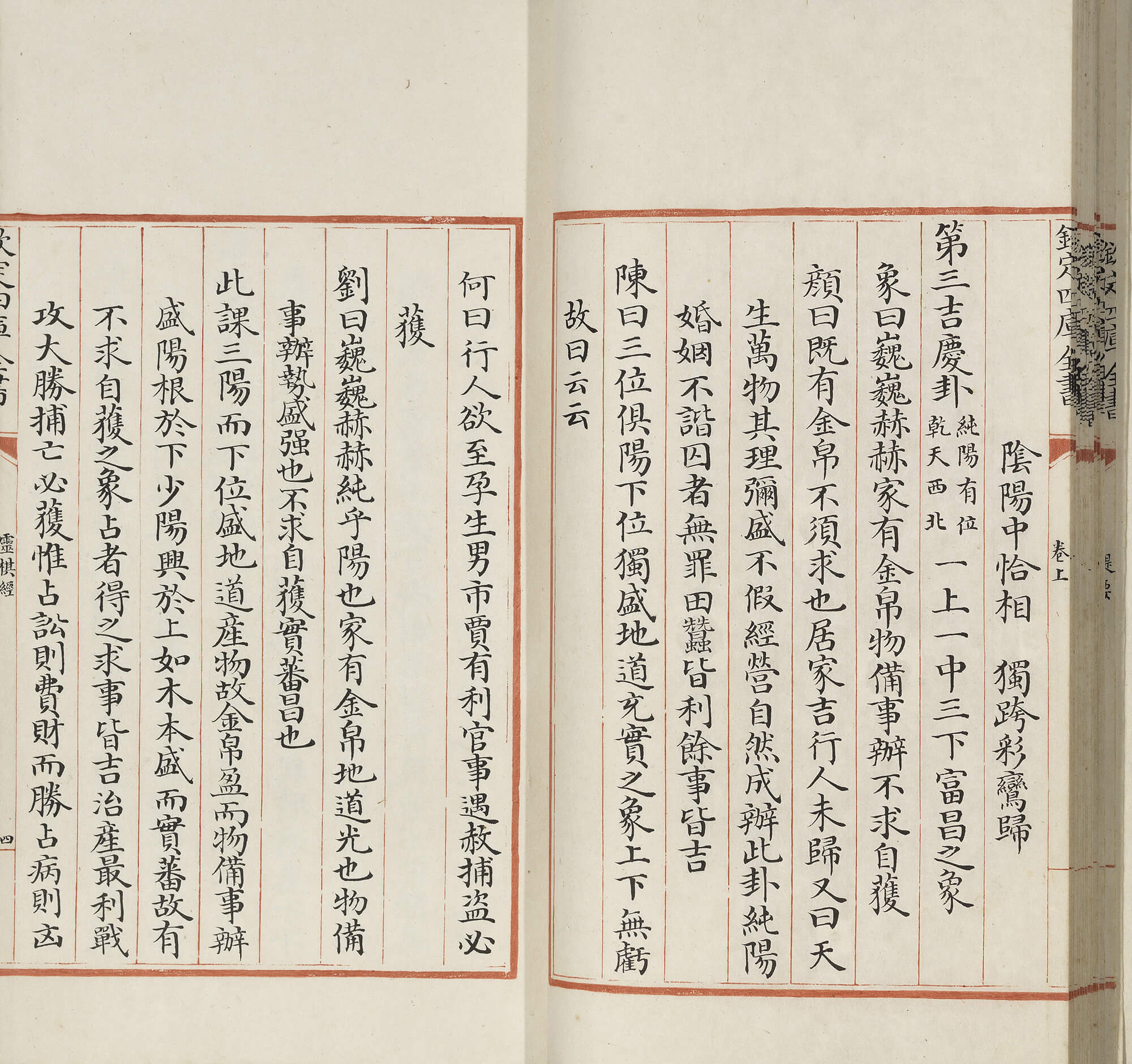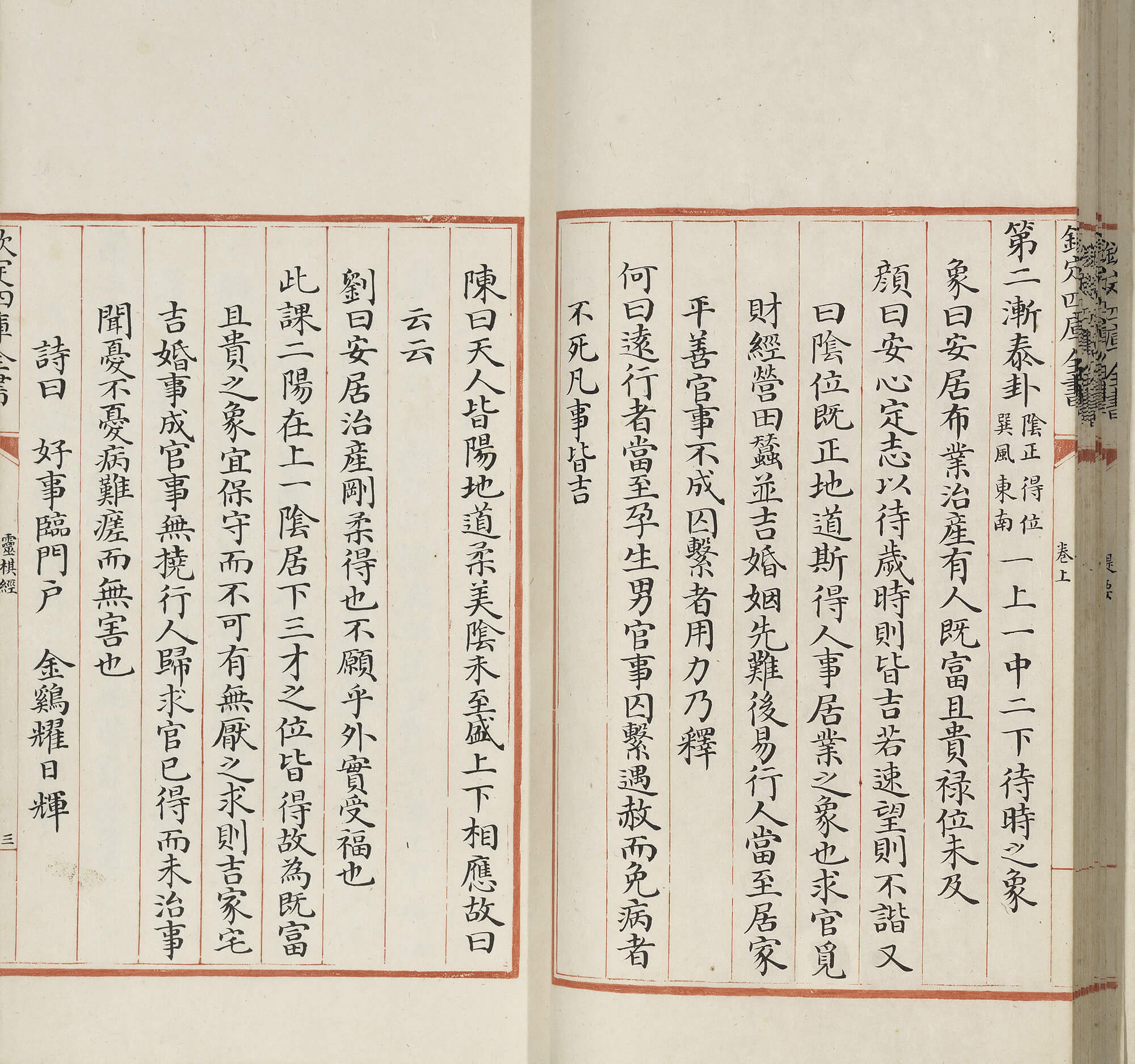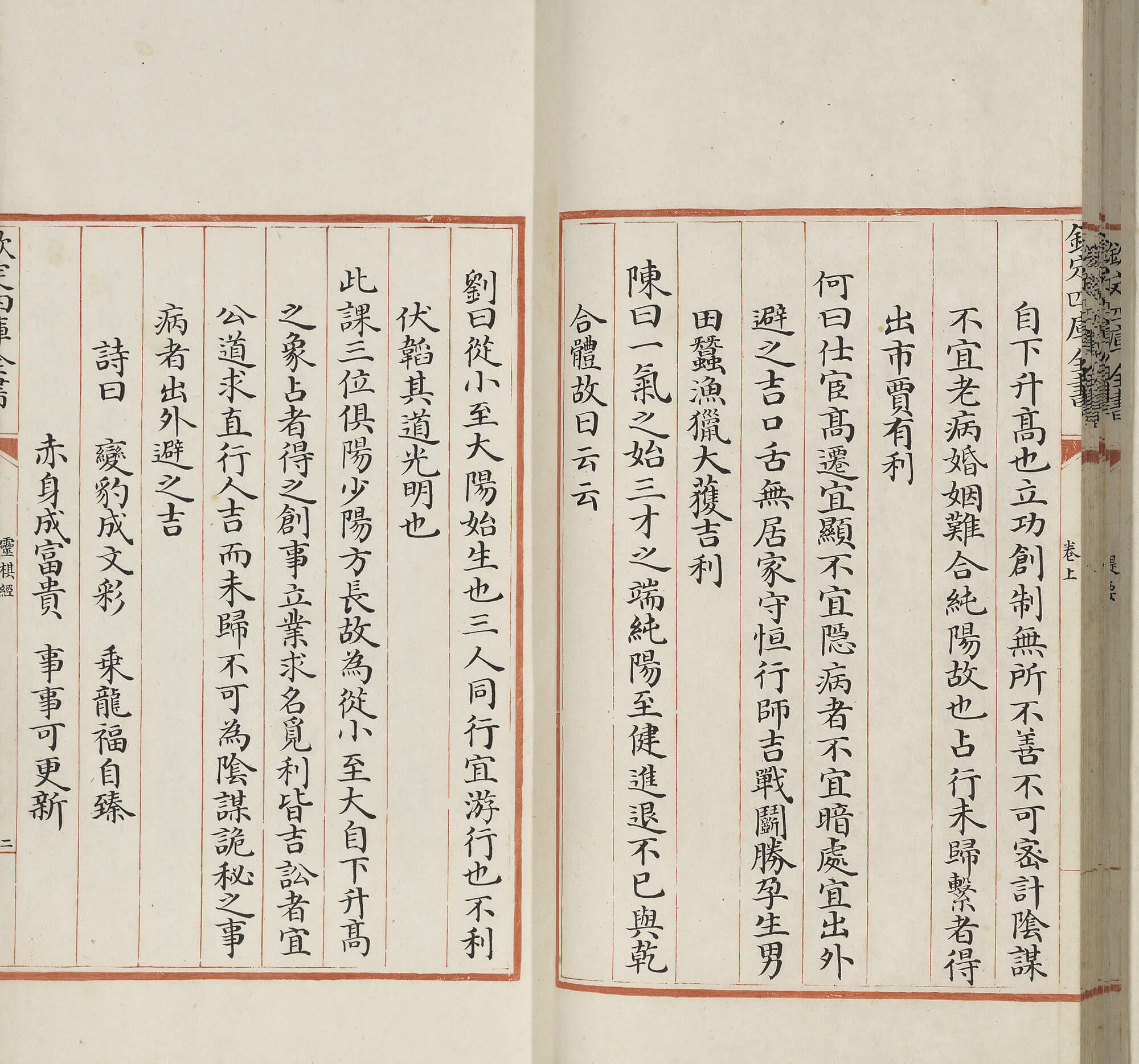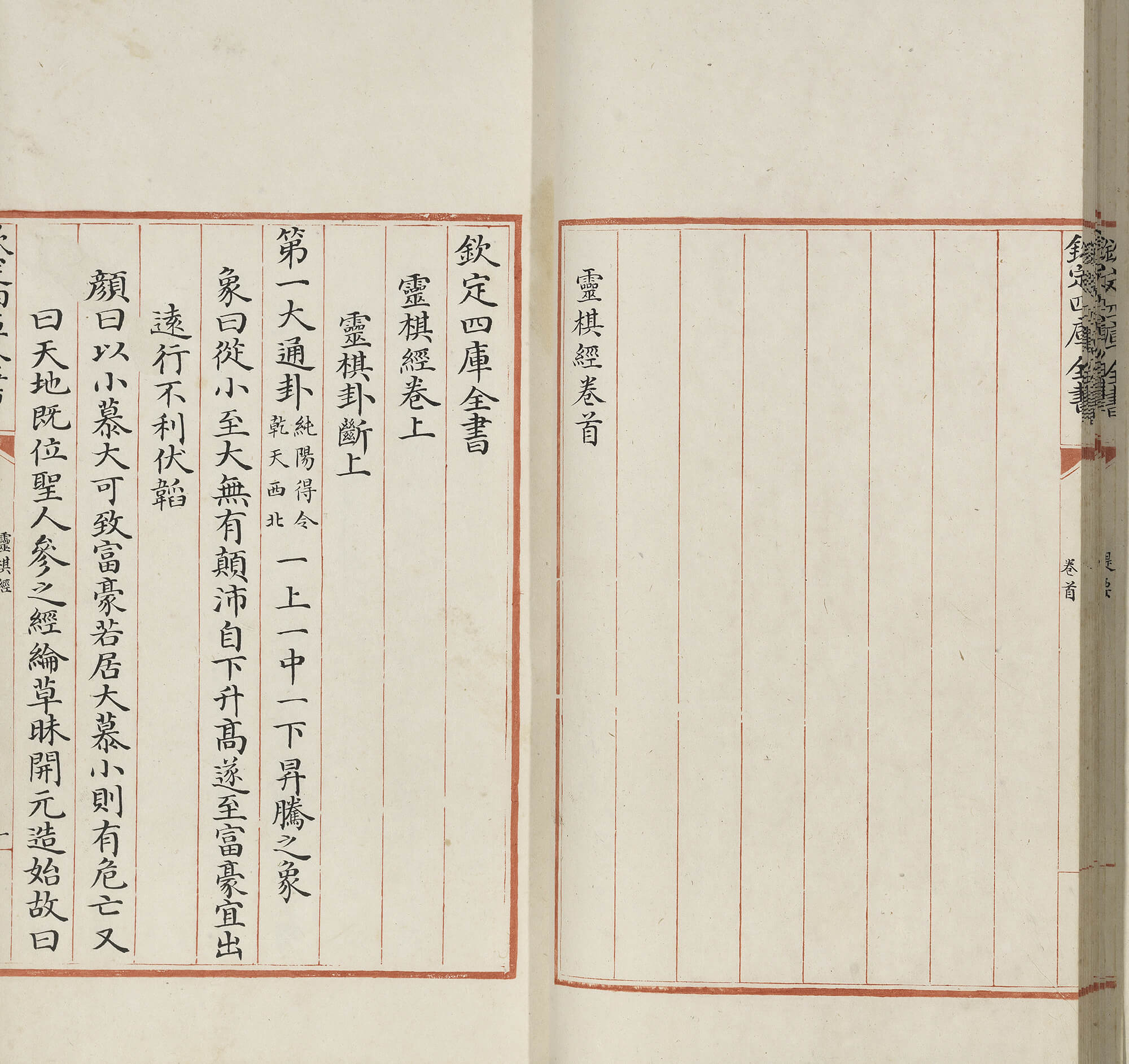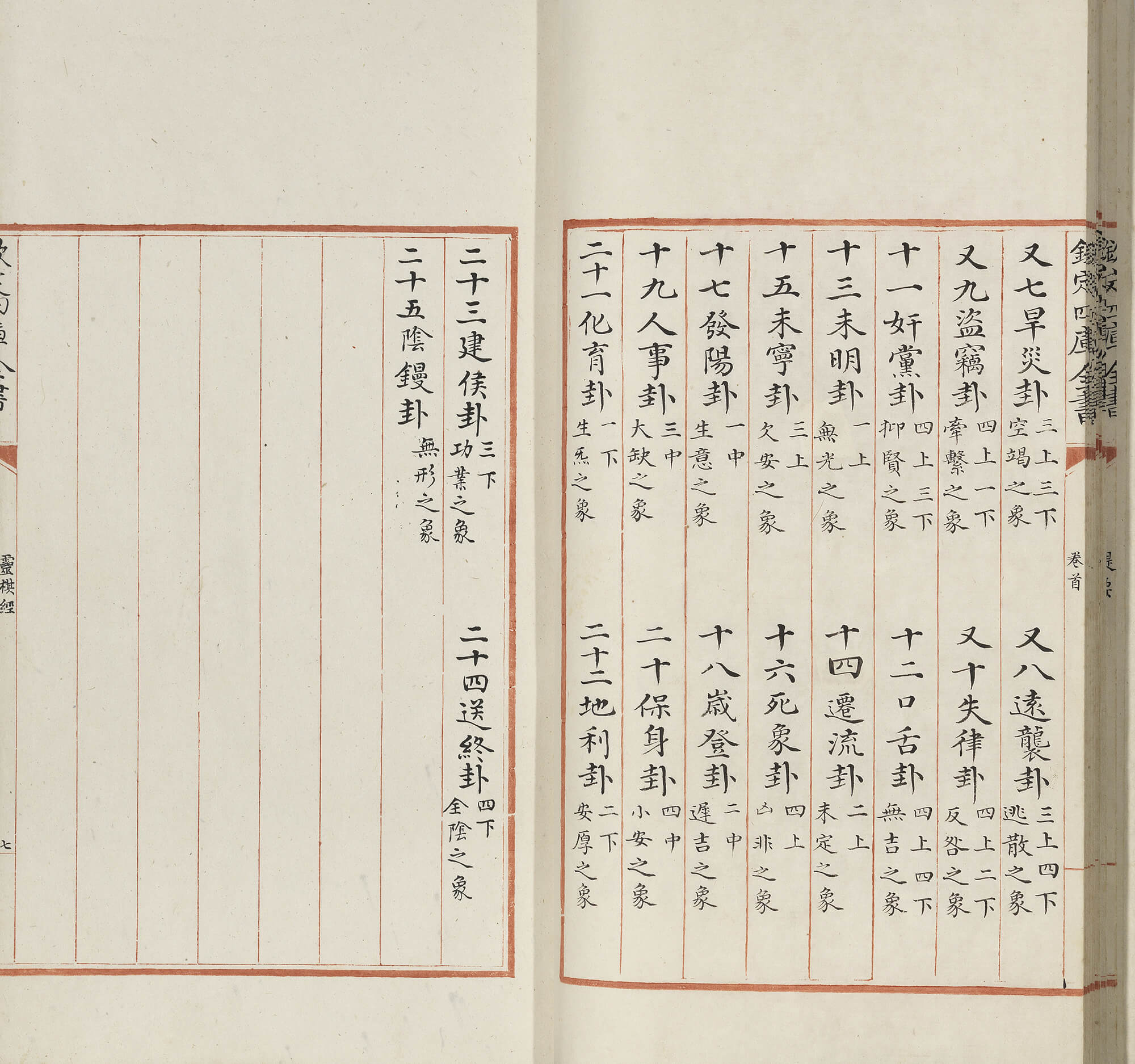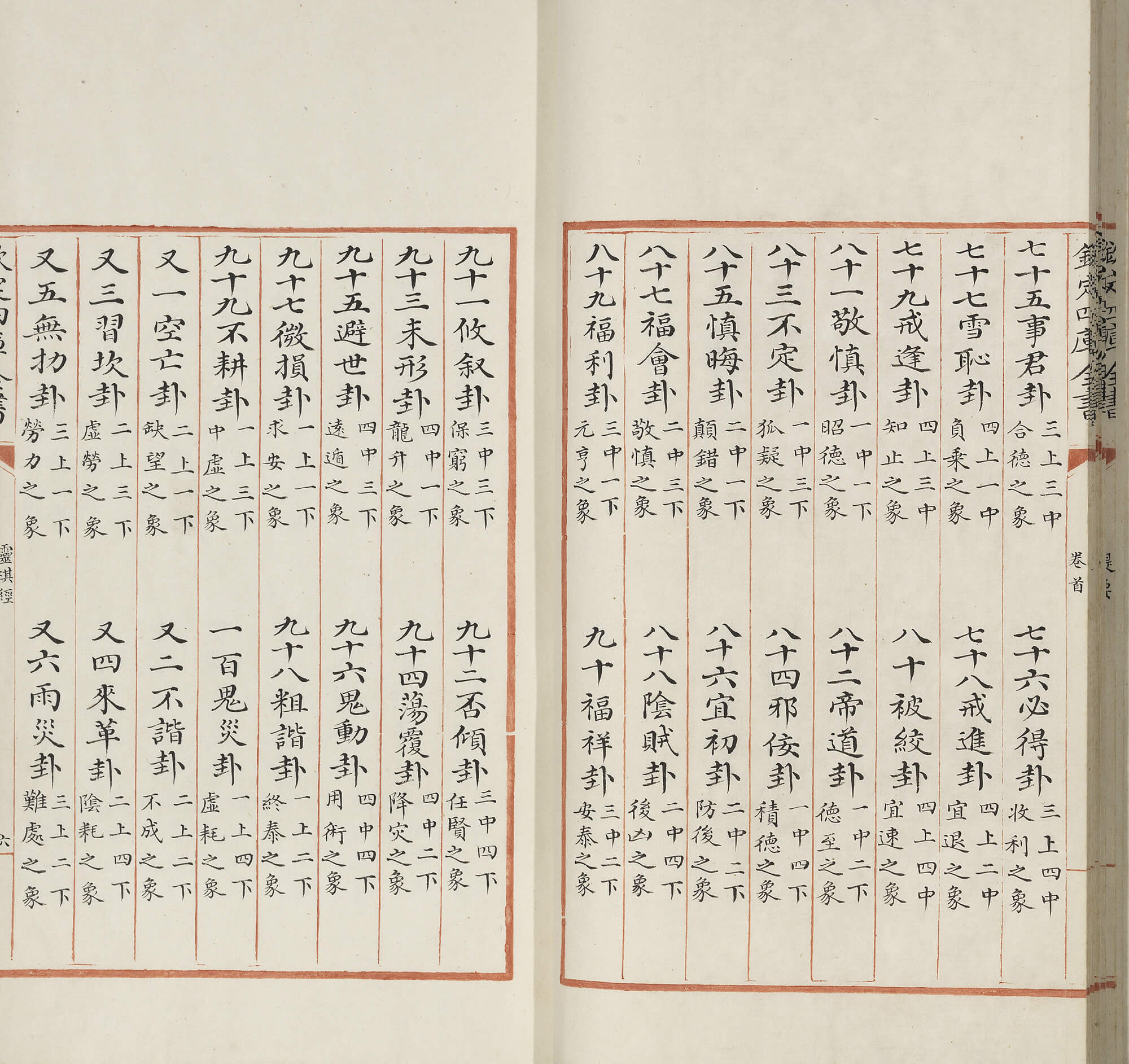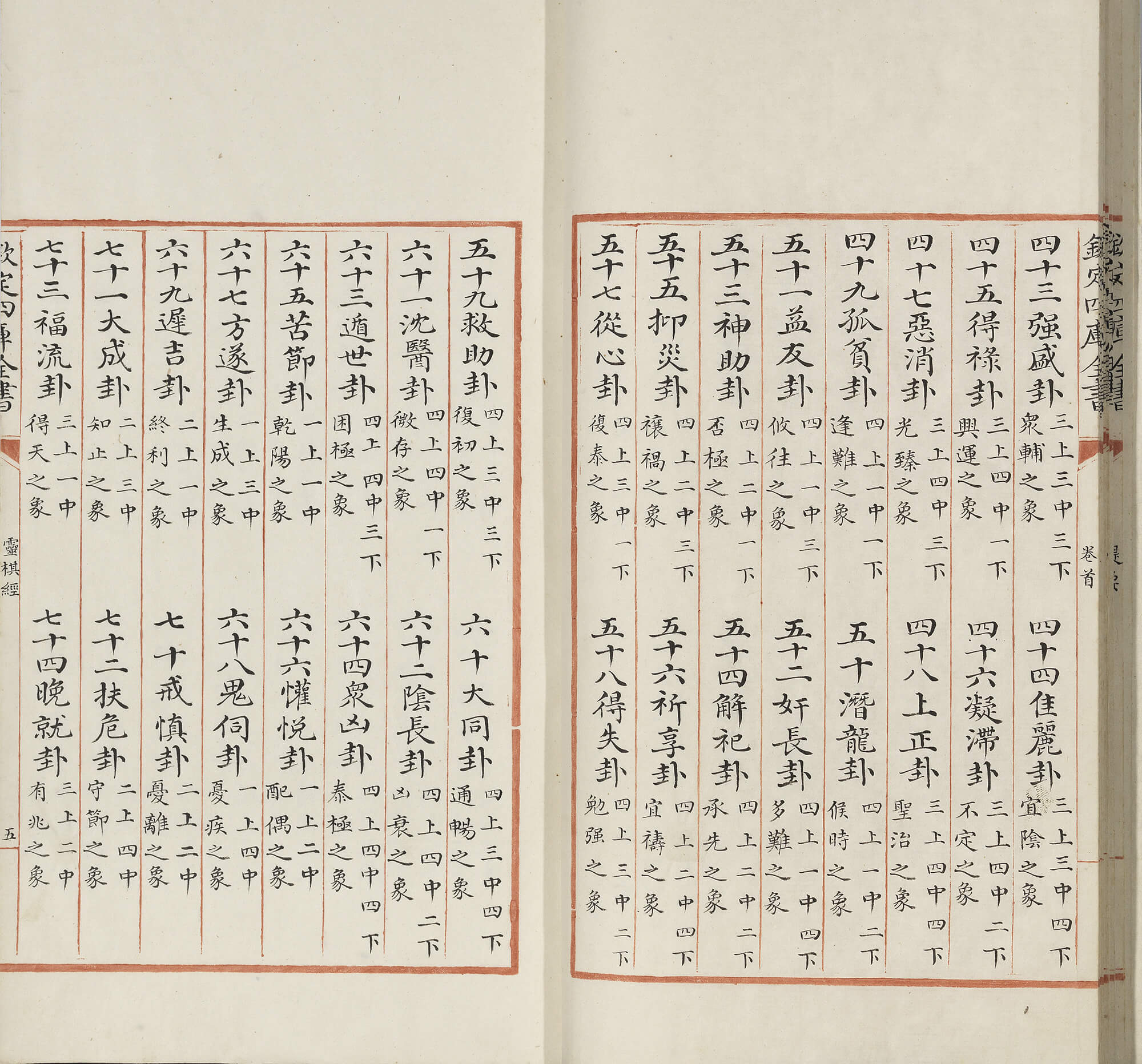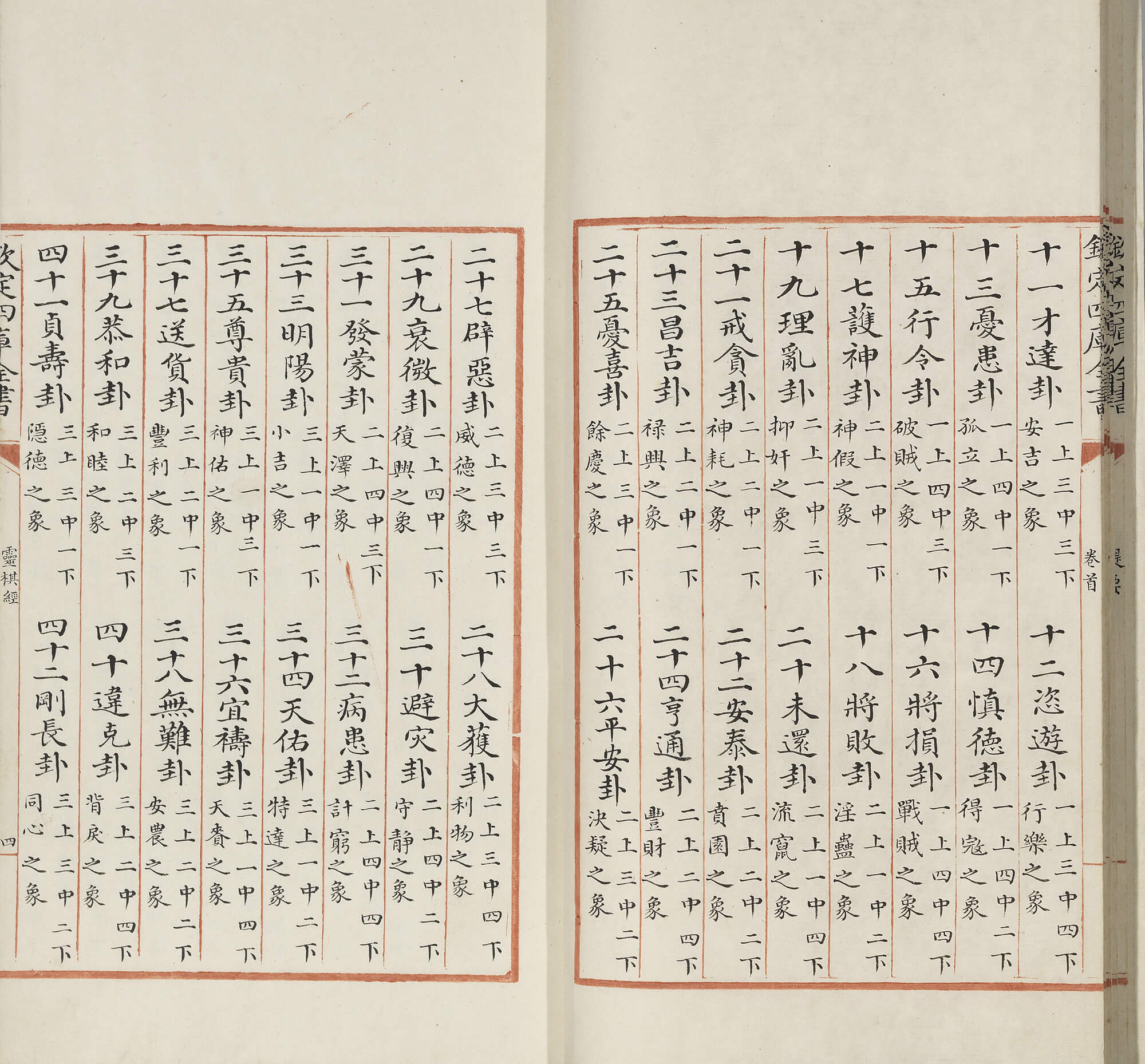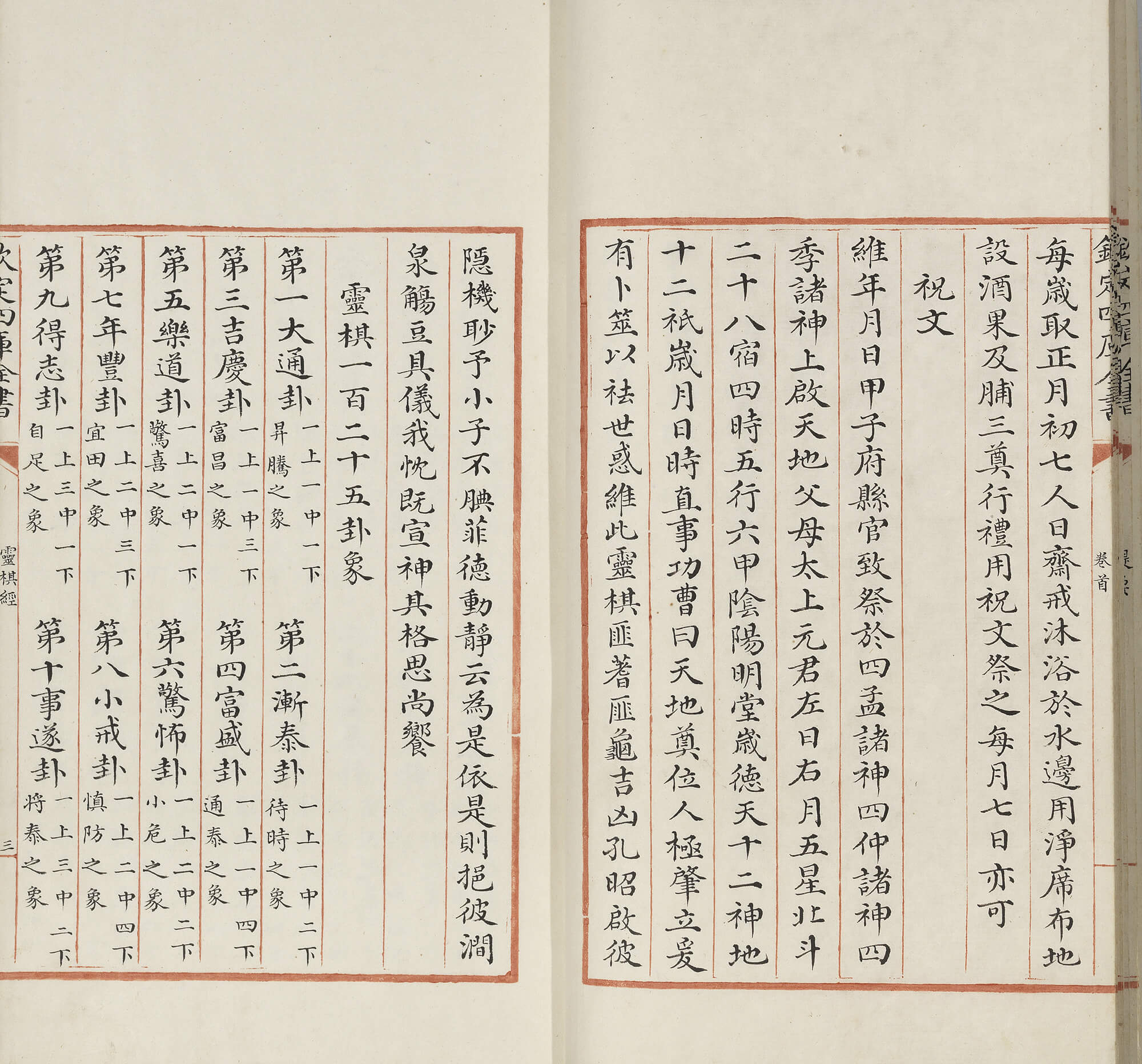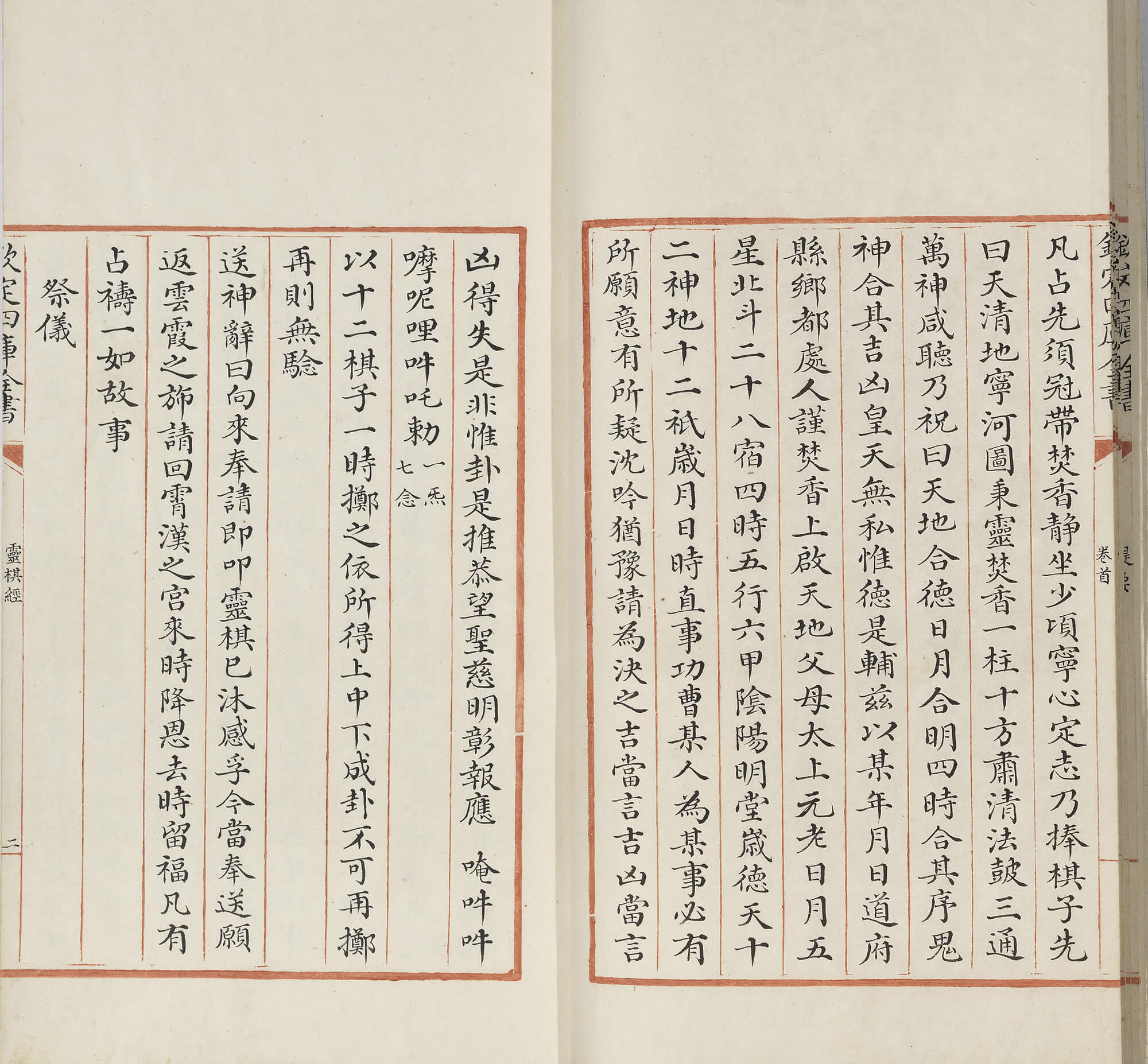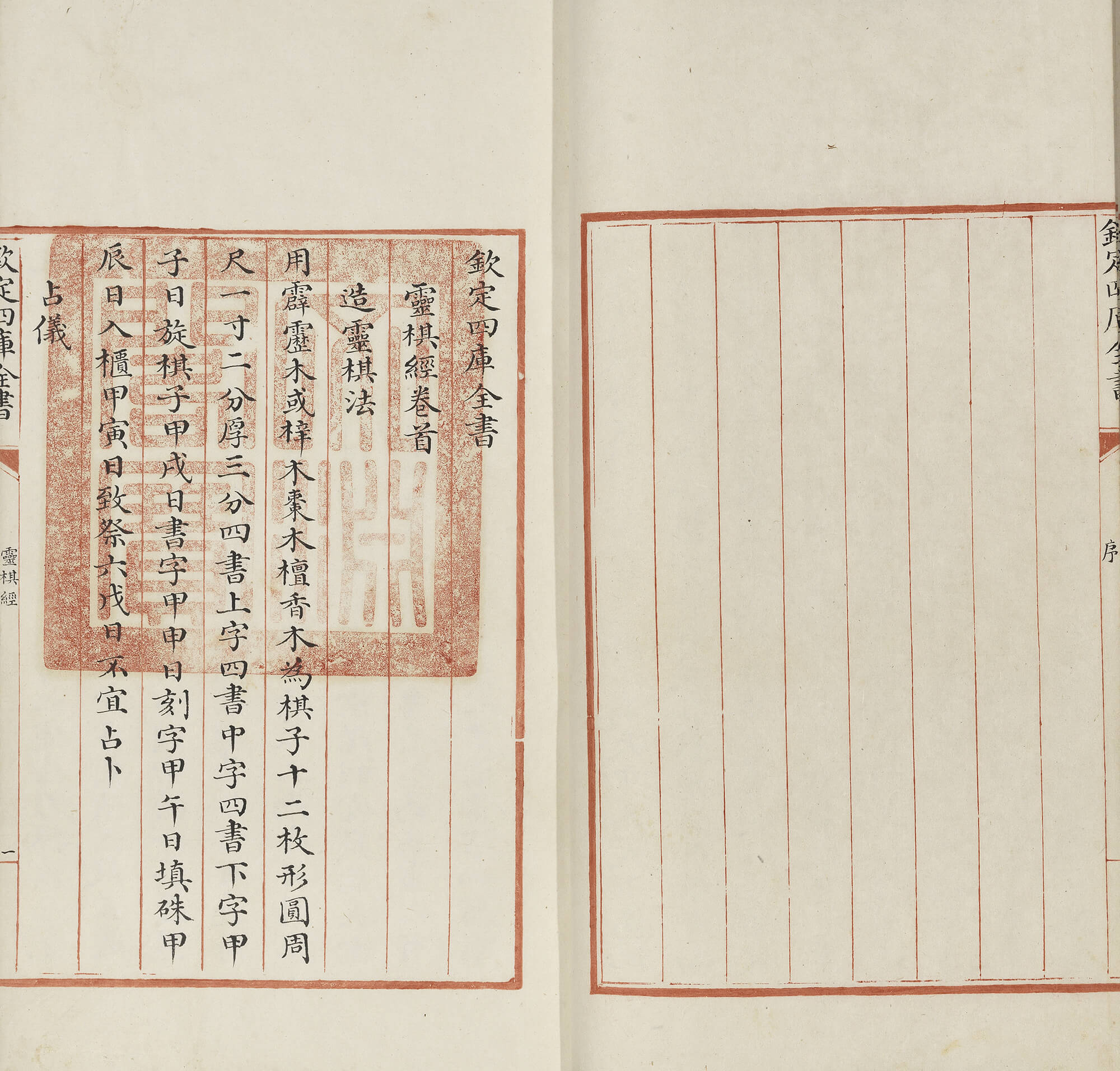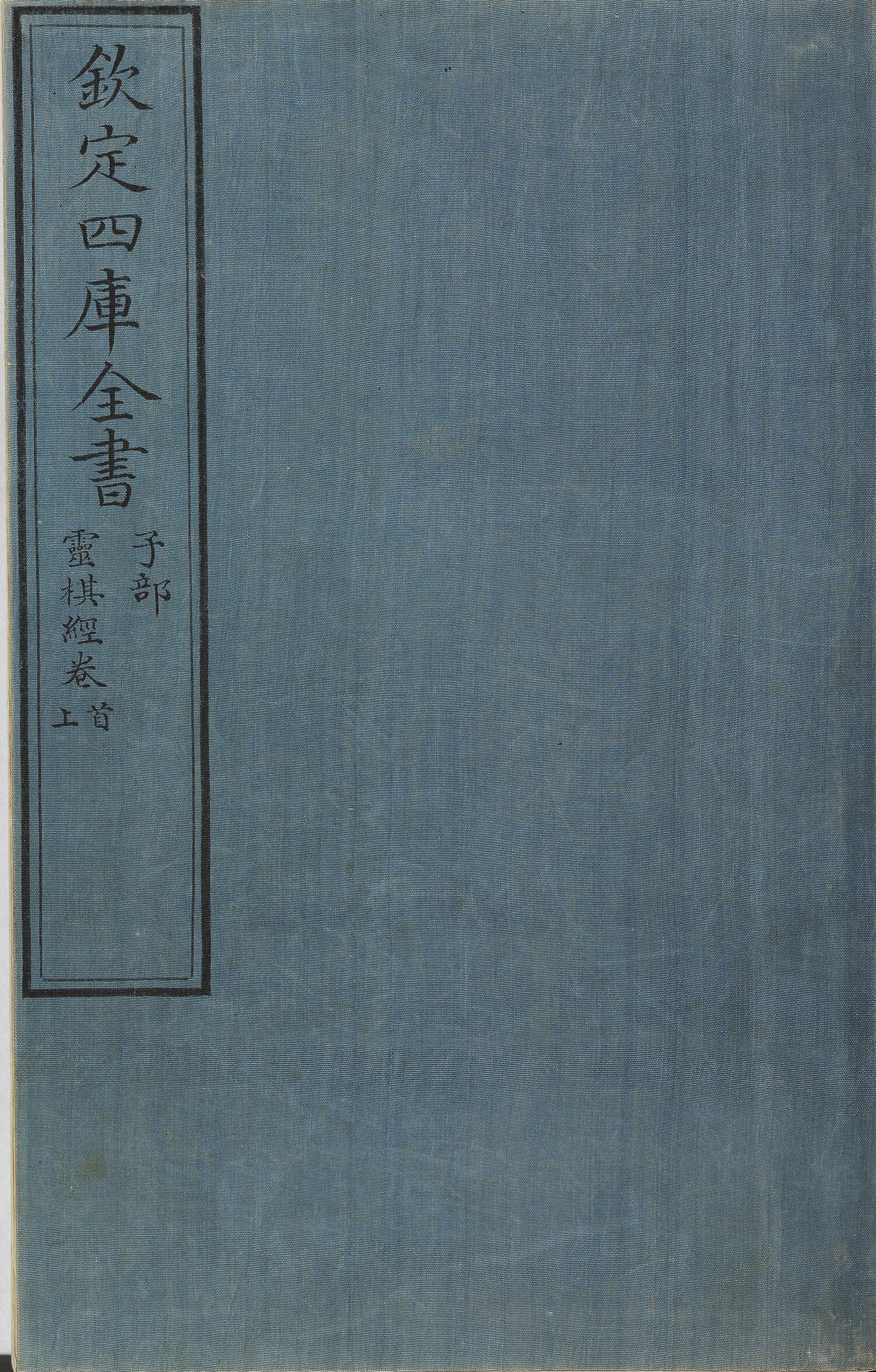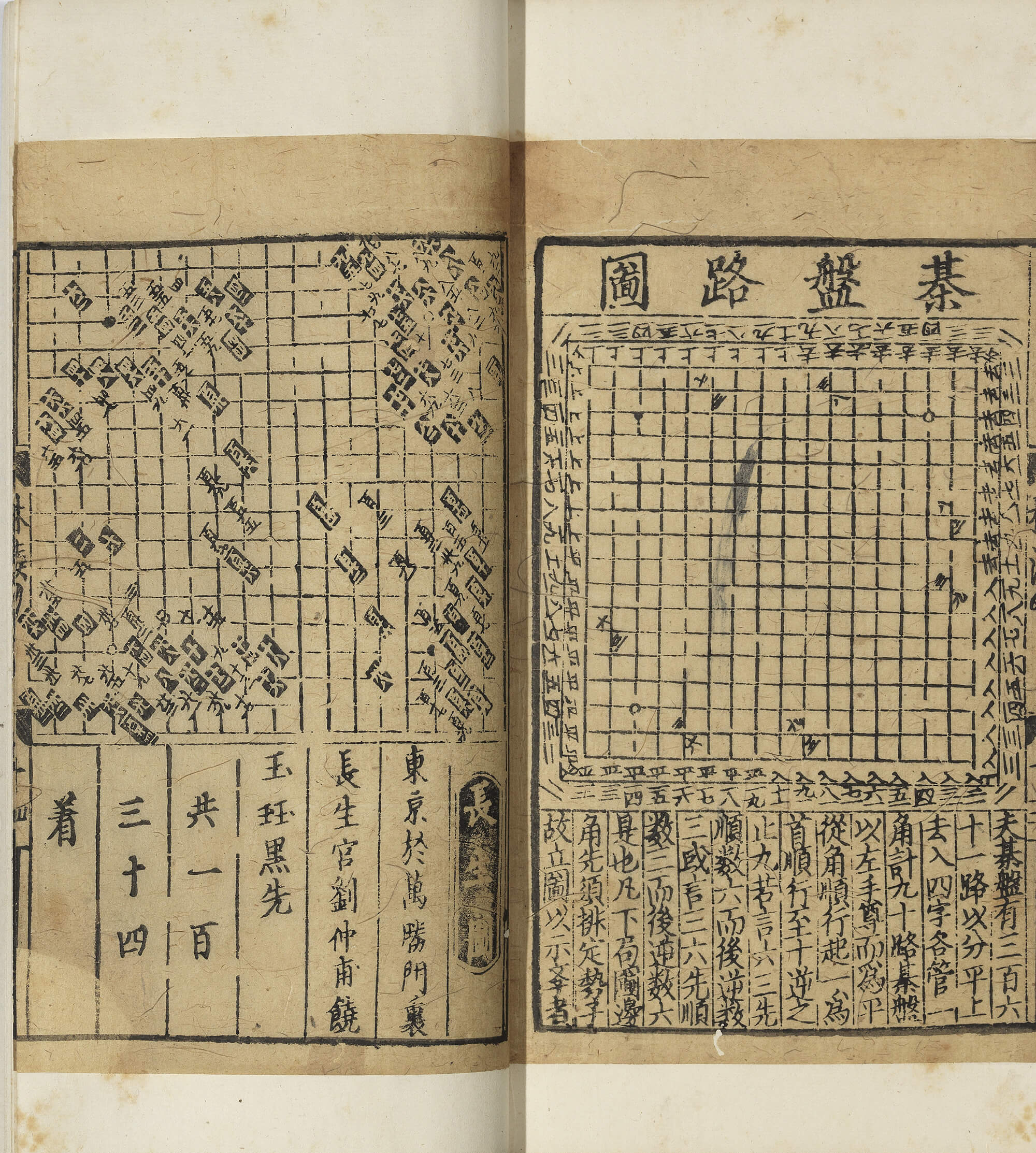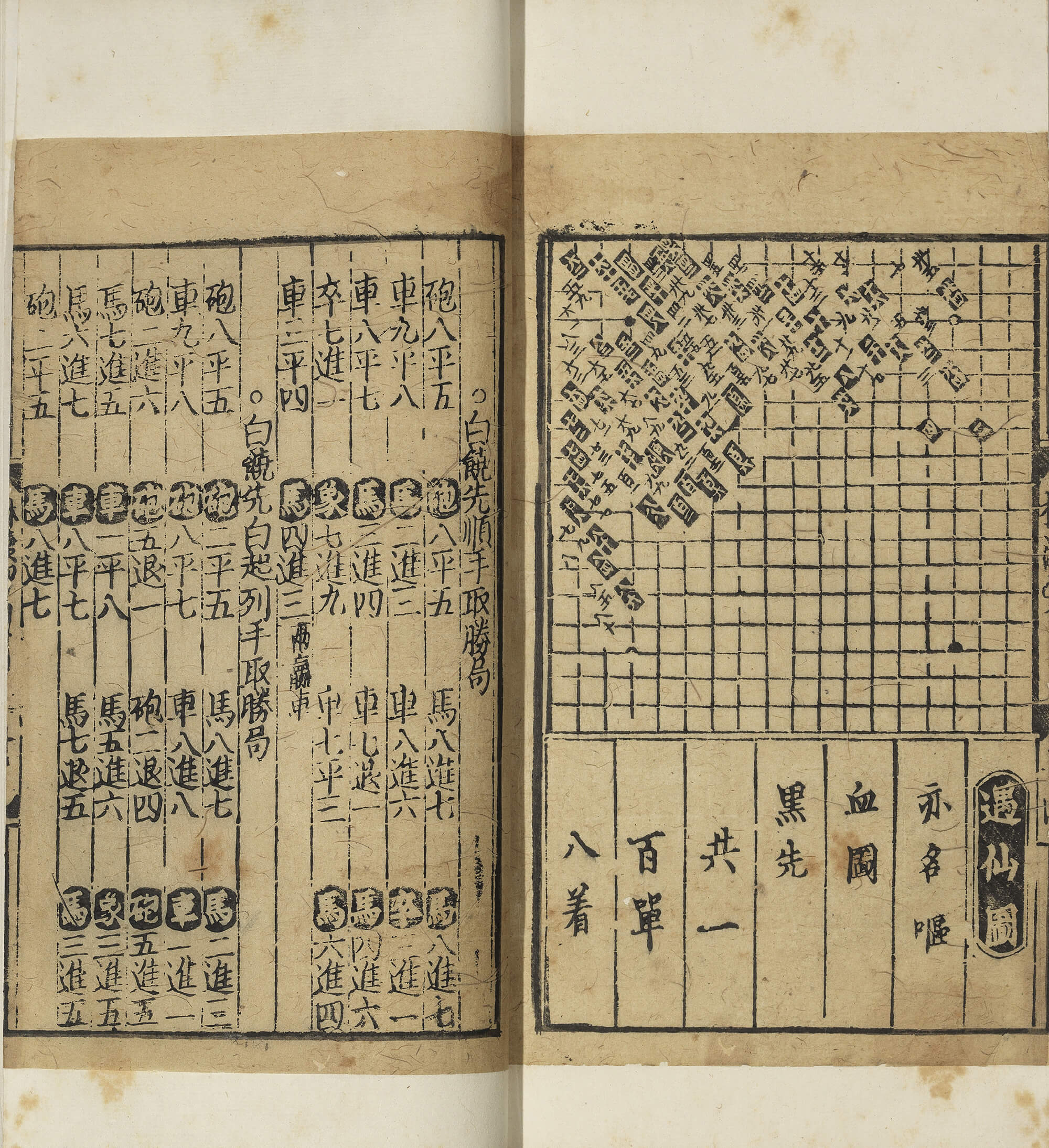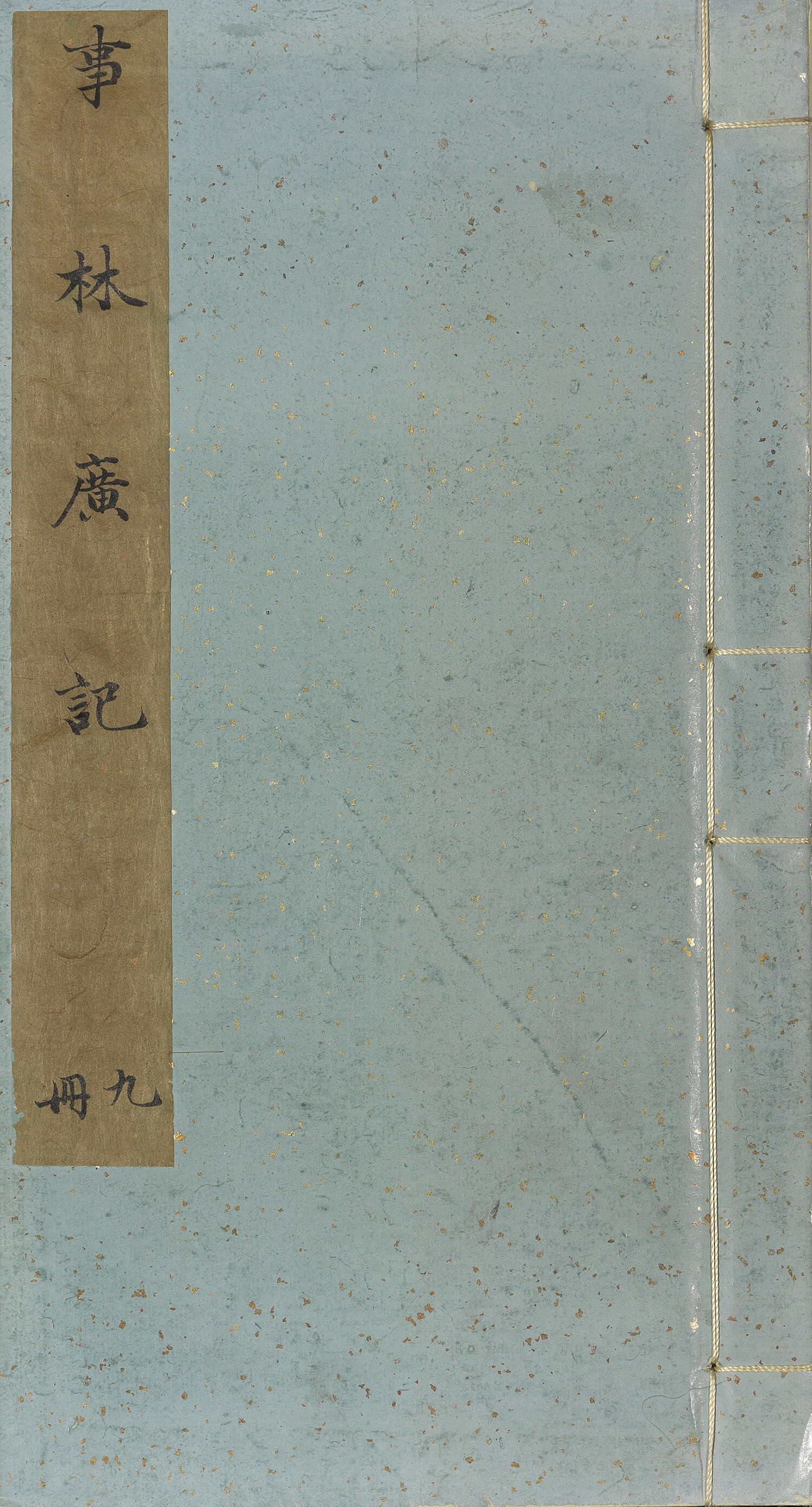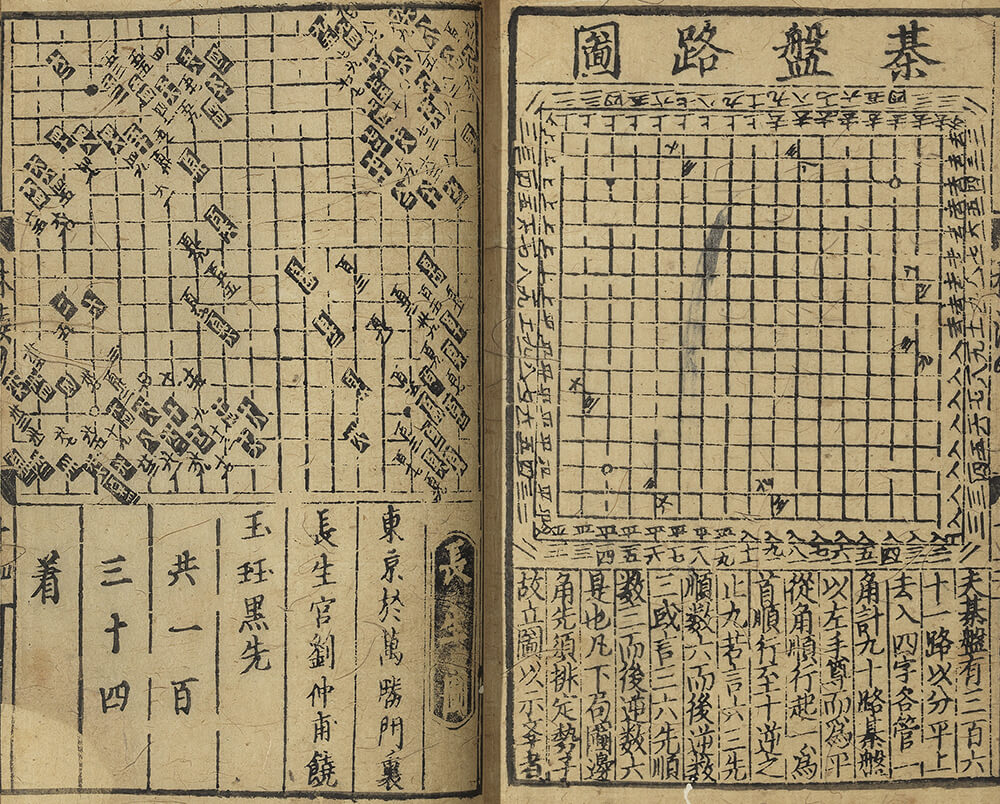

Go Manuals and Treatises
This section features historical texts related to Go, tracing the evolution of Go theory and game records while revealing how the game was used to judge character—and even divine fate. Classic of Profound Go and Mysteries of Go compile famous strategies and game records named after famous anecdotes, reflecting the literati's love of skill and symbolism. Encyclopedias like Shilin Guangji and Broad Records from Yimen show how common Go was in daily life. Preserved in Ming-Qing manuscripts and Japanese editions, Classic of Efficacious Game Pieces used Go-like pieces to tell fortune—revealing the game's role beyond mere entertainment.
- The Classic of Divine Chess
- The Complete Library of the Four Treasuries, Wenyuan Pavilion Edition Manuscript, Qianlong Era (1735-1796), Qing Dynasty
- Single Page: 22x14.4
- Gu Ku 017985, 017986
- Certified National Treasure
The Classic of Divine Chess is an ancient manual on divination with chess-like pieces. Traditionally attributed to Han-era figures Dongfang Shuo (154-93 BCE) or Liu An (179-122 BCE), these ascriptions are likely fictional. Modeled on the Yijing, the text presents 125 four-line hexagrams in clear language. Divination involves casting 12 specially marked pieces—four each of "upper," "middle," and "lower"—after incense offerings. The resulting combinations are interpreted to reveal fortune or misfortune. Reflecting ancient cosmology, the system uses yin-yang dynamics to divine fate, showing how ancient board games like chess may have inspired practices for understanding the will of heaven.
- The Newly Compiled Illustrated Encyclopedia of Daily Affairs
- Woodblock printed book, Chunzhuang Academy in Jian'an in the Zhishun reign (1330-1333), Yuan Dynasty
- Single Page: 17.3x10.5
- Gu Shan 004371, 004372
- Significant Antiquity
The Shilin Guangji, compiled by the literatus Chen Yuanliang during the Late Song and Early Yuan Periods, served as an encyclopedic compendium of contemporary life, encompassing a broad range of content. It emphasizes the details of urban life at the time and includes illustrations, making it an important resource for understanding folk life in the Early Yuan. The content related to Go is included in Volume Two, 'Leisurely Sentiments,' which contains the 'Thirteen Chapters on Go' and famous Go games. Among these, the most renowned is the 'Encounter with Immortals Scroll.' This game originates from the Song Dynasty Go attendant Liu Zhongfu (details unknown), who was defeated in the mountains by an old woman. Due to the old woman's astonishing skill, contemporaries believed Liu Zhongfu had encountered an Immortal, hence the name 'Encounter with Immortals Scroll.'




